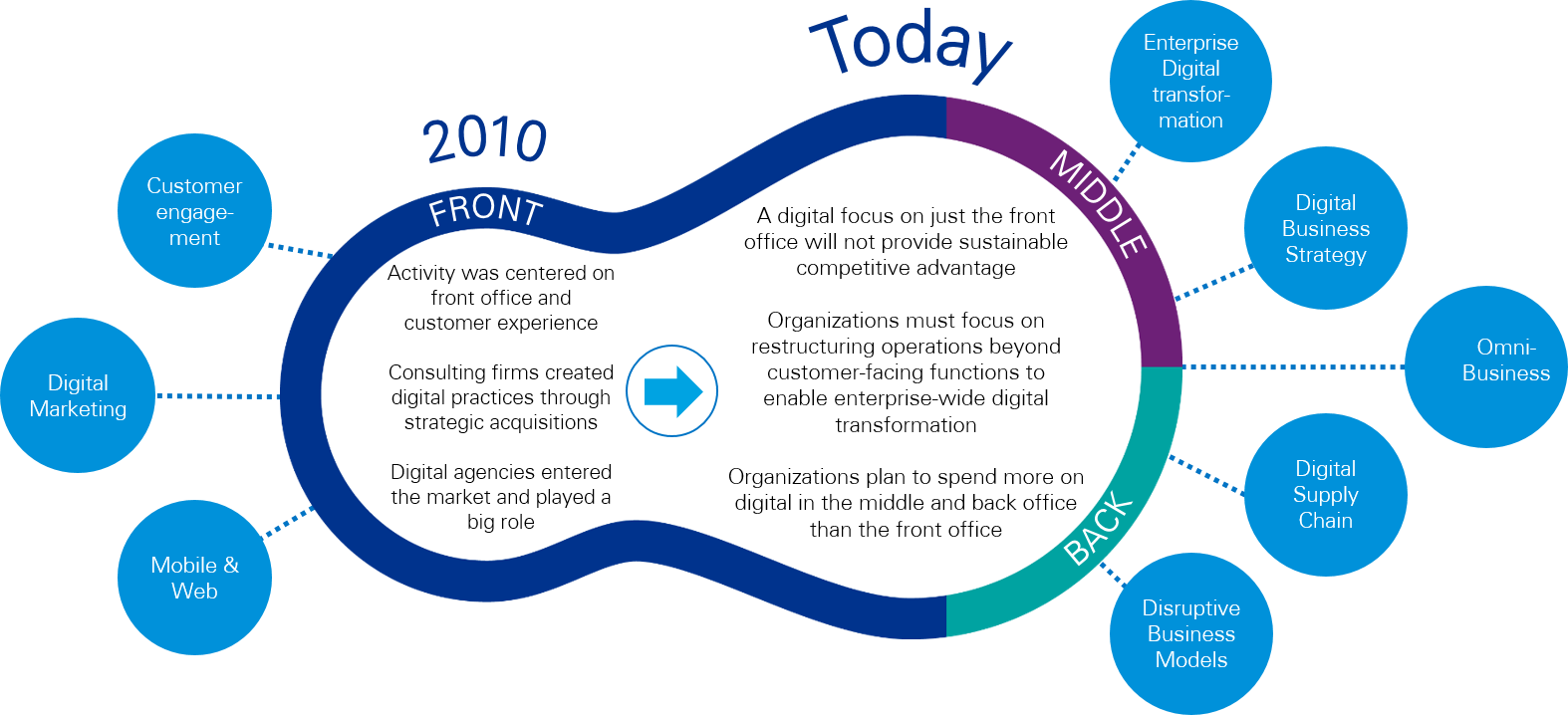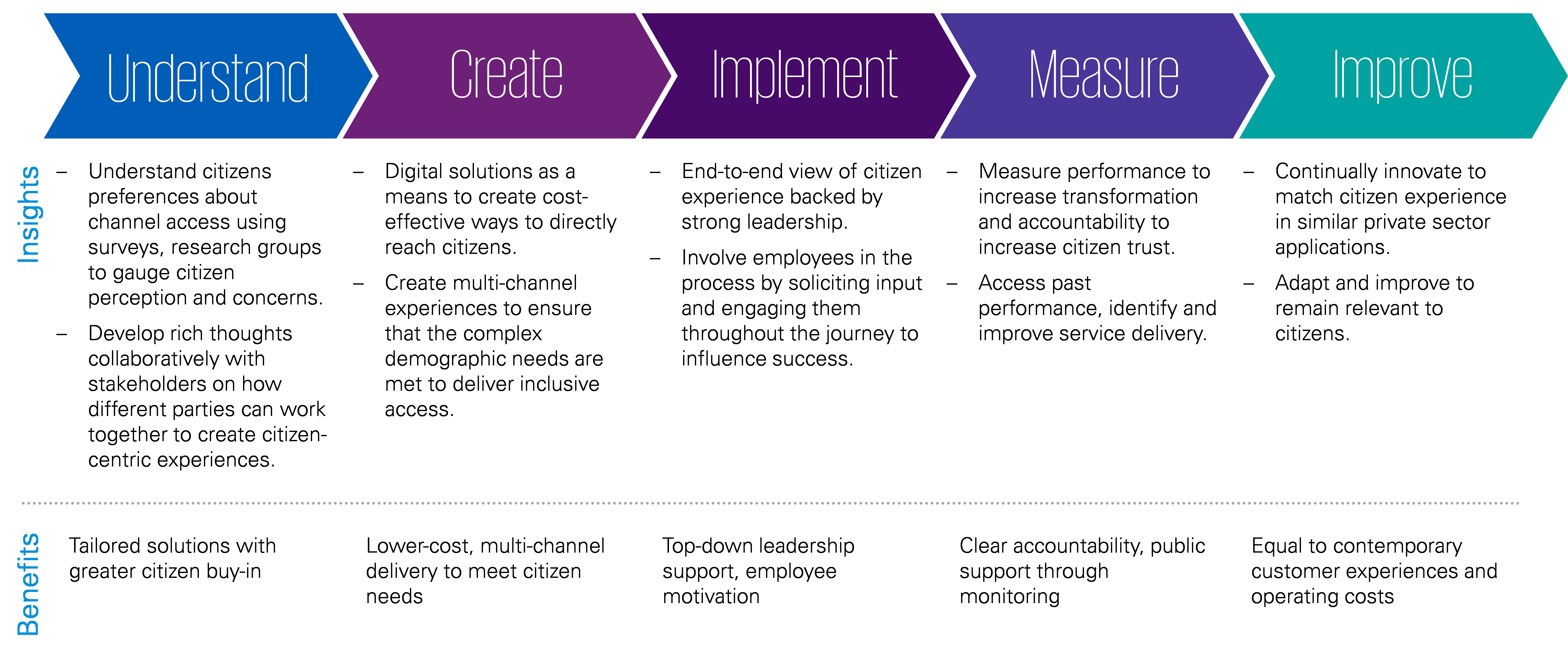By: Yvon Audette , National Leader, IT Advisory, KPMG in Canada
Digital innovations are ubiquitous, are disrupting traditional business models and are fundamentally transforming our societies. With the mass adoption of digital technologies such as smartphones, tablets and wearables, citizens are continually connected to the world around them. Many of these innovations are the result of agile, tech-savvy organizations that are uninhibited by legacy policies, processes, skills and technologies. The convergence of these new technologies, citizen expectations and financial pressure is challenging the public sector to innovate and deliver rich, citizen-centric experiences that match or exceed the services offered by their private sector counterparts.
Digital Defined
The word “digital” is broad and blurs the lines between physical and virtual. Digital is a mindset centered on creating a rich user experience that is personal, invokes emotion and motivates desired behaviors. As the following figure illustrates, these experiences are a result of new business models, services and products that place the citizen at the core of everything and transform an enterprise from front-to-back.
Barriers to Digital Transformation
In implementing digital transformations, government organizations are often constrained by:
-
Legacy processes, policies, regulatory models and IT systems that inhibit information sharing, data driven decision-making, automation, consolidation and modernization
-
Leadership and culture that values status quo and resists risk taking, exploration of new business models and collaboration opportunities across the organization
- Outdated skills and challenges with recruiting and retaining the requisite talent to drive digital transformation along with the perceived need to “compete” with the private sector for talent as opposed to an emphasis on partnerships
- Lack of strategic alignment on digital across the government, its complex network of stakeholders, partners and clients with disparate and fragmented projects operating in a silo fashion
- Focus on reducing costs to meet budgetary constraints as opposed to creating rich, citizen-centric experiences and leveraging automation to drive operational efficiencies.
Public Sector Response to Digital
These challenges have necessitated that governments worldwide re-think their approach to digital. As a result, governments are beginning to transform how they engage their key stakeholders to deliver a better experience, attract top digital talent, modernize service delivery, and promote openness and trust. The guiding principles that governments need to embrace include:
- A clear, well-articulated vision, strategy and roadmap for digital that is shared across its departments and agencies as part of a ‘one’ government approach,with well-defined goals and success measures and integrated with overarching mandates to serve citizens
- Senior leadership buy-in and continued funding for digital transformation along with leadership understanding of required cultural changes needed to embrace innovation, collaboration, information sharing, flexibility and risk taking
- Involving citizens and partners in the design process by actively soliciting ideas, gathering feedback and co-creating solutions with the citizens in mind from the beginning and throughout the design process in an effort to increase transparency, accountability and trust
- Recruiting next generation talent through non-traditional recruiting channels, forming partnerships, empowering the workforce and investing in digital training and skill building
Digital Transformational Journey
Implementing successful public sector digital transformation is a journey that begins with understanding citizens’ current needs and is a never-ending pursuit of innovation to adapt and predict evolving needs. Digital transformation is not limited to a single nation, but is a common objective shared across the world. These nations, while unique, also demonstrate a common journey. The journey depicted below is cyclical with nations being placed at various stages along the transformational pathway.
The above journey illustrates that in order to succeed in digital transformations governments need to answer the following key questions with respect to its citizens:
- How can we better understand our citizens’ preferences now and in the future?
- How can we find cost effective ways to engage our citizens and meet their needs?
- How can we efficiently involve our citizens and partners in solution and service design?
- How can we measure and communicate progress?
As the following examples will illustrate, nations world-wide are finding unique ways to answer the above questions to drive value within their ecosystems.
Brazil’s Transparency Portal
Until recently, Brazilians had had limited visibility of the way in which the government spent public money. This lack of transparency meant that citizens could not effectively hold their government accountable for the use of public resources. As a result, the government created a transparency portal, which made it possible for citizens to view and follow up on financial execution of federal government programs. This portal was supported by a Freedom of Information law that mandated the release of information to the public and it was driven by a large publicity campaign that drove adoption of the portal resulting in increased citizen confidence and trust along with accountability for the federal government.
Estonia’s Digitally Enabled Government
Estonia achieved re-independence in 1991 after 50 years of Soviet occupation and emerged without much of the legacy IT infrastructure commonly found in other nations. The federal government responded by redesigning the nation’s information infrastructure with openness, privacy, security and future-proofing as fundamental principles. The Estonian government focused on implementing key enablers such as digital signatures and data security standards to support its central web portal. As a result, over 90% of the population now has an electronic identification card and the government has realized substantial cost savings through better engagement and efficiencies.
Canada’s Digital Commitment to its Citizens
All levels of Canadian government have made a strong commitment to digital transformation. The Government of Ontario, under the “Digital Government Action Plan” and as part of its “Digital First” initiative has committed to creating citizen-centric, digital-by-default experiences by fostering open innovation and experimentation. The Canadian Federal Government under the Digital 150 2.0 initiative has committed to equality in internet access, strong cybersecurity and privacy enablers, open data and intellectual property protection, research & development and Canadian digital content.
Still in its early stages, Canada has encountered similar challenges to other jurisdictions with respect to digital. Although Canadians in general have largely adopted digital innovations in their daily lives, the Canadian public sector is only now beginning to feel the need for strong policies on key enablers such as cybersecurity, open data, and digital identity. Although, Canada has found unique ways to increase its access to digital skills through partnerships and collaboration with other nations, government organizations still struggle to attract and retain quality next-generation talent. The Canadian public sector is also fragmented in its adoption of digital innovations. While all organizations would agree that adopting digital is an essential part of their mandate, a significant amount of work is still outstanding in order to embrace and truly integrate digital innovations across Canada and a starting point is to embrace the guiding principles outlined above.
Closing Remarks
Digital transformation both in the public and private sectors is a challenging endeavor but is becoming a cornerstone in many jurisdictions’ modernization efforts across the world. The convergence of new technologies and business models has increased citizen expectations and has necessitated that the public sector act now in order to continue to remain essential to their citizens and many nations have responded to the challenge. The starting point of an organization’s digital transformation regardless of public or private sector is a clear understanding of citizen needs, which forms the foundation of a digital strategy linked to measurable business value. Ultimately, to truly realize the benefits of digital, the digital strategy must be integrated with all aspects of the organization, be underpinned by a strong organizational culture and leadership, and be supported by relevant skills and talent.
 Yvon Audette , National Leader, IT Advisory, KPMG in Canada,
Yvon Audette , National Leader, IT Advisory, KPMG in Canada,
will be leading a session on this topic, Approach to Digital Transformation at the 2017 CIO Peer Forum.


